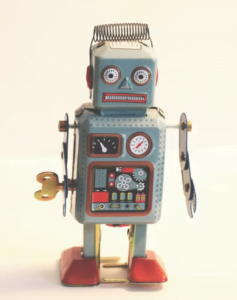 REQUEST QUOTE
REQUEST QUOTE
Robot Are Going To Use Climate Clues

The Southern Ocean Carbon and Climate Observations and Modeling (SOCCOM) undertaking’s central goal is to drive an extraordinary change in the logical and public comprehension of the job of the huge Southern Ocean in environmental change and biogeochemistry. The Southern Ocean comprises of the World Ocean’s southernmost waters, by and large viewed as south of 60° S scope and encompassing Antarctica. Significant and remarkable peculiarities happen inside and around the Southern Ocean. Features include:
The Southern Ocean represents around half of the anthropogenic carbon take-up and most of the maritime anthropogenic hotness take-up in spite of containing something like 30% of the Earth’s sea region.

Models demonstrate that upwelling in the Southern Ocean conveys supplements to bring down scope surface waters basic to sea environments around the world.
The effects of sea fermentation from rising CO2 are projected to be generally extreme in the Southern Ocean, with environment tipping focuses came to in years and years.
In light of its distance, huge quantities of modern mechanical sensor exhibits are expected to concentrate on the Southern Ocean. SOCCOM, housed at Princeton University and directed by the Princeton Environmental Institute, is conveying an automated noticing framework made out of around 200 independent floats. The automated noticing framework will give almost constant inclusion on schedule and flat space over the whole Southern Ocean and vertical inclusion profound into the water section (Figure 1).
These floats and their activity are needed to have four fundamental attributes:
The sensor suite: SOCCOM’s essential objective is to all the more likely comprehend the carbon cycle in the Southern Ocean. Notwithstanding sensors for conductivity, temperature, and profundity, SOCCOM floats will incorporate sensors for broke up oxygen, pH, and nitrate. Each float will convey something like two of these three sensors.
Broken up oxygen sensor: Dissolved oxygen is connected with carbon. Estimating broke up oxygen empowers assessments of the water’s carbon content.
pH sensor: pH estimations screen changes in the sea’s fermentation on the grounds that disintegrated carbon dioxide responds with water to shape carbonic corrosive.
Nitrate sensor: Nitrate is a significant restricting supplement for phytoplankton. Nitrate overflow can decide the restrictions of phytoplankton biomass.
The sensor results will be changed over to moles per mass of seawater, empowering the quantitative examination required for seeing long haul changes and patterns. Different sensors will give overt repetitiveness and a cross-mind information quality.
A few floats will incorporate bio-optical sensors for chlorophyll fluorescence, backscatter, light transmission, or light power. As new sensors become accessible, the meaning of the center sensor suite can change. All things considered, new sensors should initially end up being equipped for activity in enormous clusters, like SOCCOM, for quite a long time. Additionally, any sensors utilized should be adjusted in the field to guarantee steady and solid information.
Floats are not just helpful for distinguishing huge, long haul patterns: For instance, preliminary floats found gigantic phytoplankton blossoms a long way from run of the mill supplement sources, for example, liquefying ocean ice. It’s conceivable that an aqueous vent in the Southern’s ocean bottom was giving the supplements. Momentary occasions will likewise be checked, including oxygen misfortune after a typhoon’s disturbance or the infusion of supplements up to 1000 meters down that comes from pre-spring plunges of surface water.1
Working life: SOCCOM floats should have a working existence of no less than three years.
Float information: SOCCOM float information should be accessible in computerized structure progressively.
End
SOCCOM will give the observational information expected to dissect and work on another age of high-goal earth framework models to expand comprehension of the Southern Ocean’s ebb and flow functions and improve projections of Earth’s future direction’s environment and biogeochemistry.


